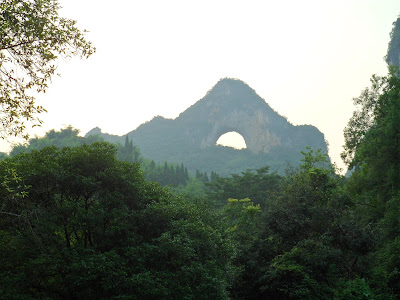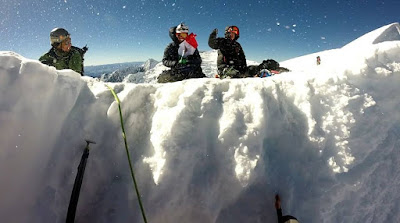RESCUE IN THE NANGA PARBAT
This is a rough translation of :
Original interview of Denis Urubko in Spanish by Darío Rodríguez / DESNIVEL - Sunday, January 28, 2018 - Updated at 9:10 p.m.
.................................
Denis Urubko "It has been a wonderful experience to help a person as extraordinary as Elisabeth Revol survive"
This is the conversation we have had today with Denis Urubko. He had just arrived in Skardu, he had not yet been able to sleep and, despite the fatigue, he did not hesitate to talk to us and explain how the rescue of Elisabeth Revol was developed and the reasons why it was not possible to rescue Tomek Mackiewicz
Congratulations for what you did Adam Bielecki and you ...
People have to help each other, especially climbers, and more so when it comes to someone as extraordinary as Elisabeth Revol, whom I respect a lot. It has been a unique experience to help her survive in such a delicate situation in winter in the Nanga Parbat.
You must be very tired, you have not slept yet ...
Of course. I have not drunk in 20 hours, my eyes are a bit burned by the sun, but we are also very satisfied. Now we meet Adam and I at the hotel in Skardu, resting and feeling that we have done what had to be done. Of course we are not totally satisfied because we could not help Tomek. But it has been great to be able to rescue Elisabeth Revol.
"No helicopter had landed before in this place, so close to camp 1"
Why did you make the decision to do the rescue on the Kinshofer route?
It is equipped with fixed ropes installed by commercial expeditions and, also, because this season did not have much ice, there was something, but not too much. We were able to climb so fast thanks to the fixed ropes, this allowed us to ascend without any doubt, and thus focus on climbing, climbing, climbing ...
We went with the ice axes and had to overcome some ice slopes, but we were also very lucky, because -as I told you- we found many fixed ropes in the route, and this allowed us to ascend quickly. The fixed ropes in the Kinhsoffer wall were in good condition and we were able to overcome it without any additional risk.
How much did you ascend until you reach Elisabeth? A thousand meters?
No, more ... around 1,200 meters ... What is clear is that we could not sit idly by. We had the possibility of doing it and Adam and I have been lucky enough to be able to help another person, showing that we are athletes, that we are human beings.
The helicopter left us one hundred meters below field 1, at about 4,800 meters. No helicopter had landed earlier in this place, so close to camp 1. When we approached, I was guiding the pilot and I said "If there is a possibility, leave us here" and he said "Let's try it" and he deposited us in that place. The moment the helicopter left us there was also an epic, heroic moment of this rescue.
Immediately, we begin the ascent.
"We were very lucky: we were able to use the helicopter, we were acclimatized, we had the necessary material ..."
How many hours did you delay since the helicopter left you until you got to where Elisabeth was?
About 8 hours .. It was night. We wanted to go light but we had no choice but to carry weight because we had to transport rescue material: store, medicines .... We made a great effort that we are absolutely satisfied with.
I think that any climber, in case of a similar situation, would do the same thing that Adam and I have done. We were very lucky: we were able to use the helicopter, we were acclimatized, there was a budget to carry out the rescue, we had the necessary equipment ... We just had to give our best. We had to do it.
How high did you find Elisabeth?
At six thousand meters, about fifty above camp 2. We had just passed camp 2, which is about 5,950 meters. When we arrived everything was totally dark, I could not see anything. On the radio someone told us that he had seemed to see a light descending. I started to scream-it was windy, it was a real miracle-and we heard a voice in the darkness. It was a great joy because we knew that we were close to her and that we were going to be able to help her.
She is a very strong woman who came down by herself, in a really extreme situation. He managed to descend slowly until we met.
At that moment we felt that our mission had been a success. Everything has been a miracle. The helicopter pilots landed in a truly incredible area a little below field 1 of the Nanga Parbat. This helped us a lot because it left us relatively high. Immediately we begin to ascend. And Elisabeth kept fighting until the end, descending with a very strong mentality. She is a totally incredible woman.
"We rested four hours in a very small tent in camp 2 and at 6 in the morning we started the descent"
How was Elisabeth when you found her?
It was totally destroyed, its fingers were very white, it descended to -perhaps- 20 meters an hour. She was freezing, very cold, she was very tired but, in any case, she is a very strong woman who was doing something extraordinary. A woman who can do great activities in the future because she is an authentic climber.
It has also been very important that Elisabeth had the willpower to continue descending
Yes, she is a very strong and motivated woman.
How was the descent with Elisabeth? Very difficult?
It was not difficult. We did what is normally done in a rescue operation. You have to be aware of a person who raps very tired at high altitude and this takes a long time. We rested four hours in a very small tent in field 2 and at 6 in the morning we started the descent, rappelling, always step by step; It took a lot of time but, in any case, we did it the way we have to solve this kind of situations.
How did Elisabeth spend the three nights until you rescued her?
It is better that she tell you, that she is the one who tells you her adventure.
The few hours we rested we did in a small bivouac tent for two people, but there were three of us. We gave her some water, medicine, and she was able to get some sleep sometimes leaning on me, sometimes on Adam. We were happy to be able to help this great woman and mountaineer. Adam and I did not sleep at all. The important thing was that Elisabeth slept a few hours.
Was it a tent that you found or did you bring it with you?
We went up with a very light bivouac tent. We found a very good platform to install at an altitude of 5,950 meters, in camp 2 and we could rest for a few hours, enough to heat some water and give some medicines to Elisabeth.
"We had to make a decision: either help Elisabeth survive or continue up with a very slight hope of being able to find Tomek"
How are the freezes that Elisabeth has? Very serious?
They are not terribly serious, they have frostbite, I have seen much worse ... I think it is even possible, I hope, that she can overcome them without major operations and that within a year she might be climbing normally and we can see extraordinary climbs carried out by this woman .
Where do you have the most severe freezes? On the hands or on the feet?
Regarding the feet I'm not sure, but the fingers of my hands I saw them at night. They were very white and when they started to warm up they went black, but they did not look extremely black either; It was like a shadow on the top of the fingers. I think they are not excessively serious freezes.
So the Tomek rescue was impossible at this point...
At that moment we had to make a decision: either help Elisabeth survive or continue up with a very slight hope of being able to find Tomek. We also had a very bad weather forecast for the following days. It was evident that we had to stay with Elisabeth, who was very weak, and that is why we decided to focus on helping her.
Both Adam and I are not in a position now to face the rescue of Tomek, in case anyone wants to try ... But it has been three or four days since Tomek had the problems due to altitude sickness and Elisabeth told us that he was in very bad conditions. It is very difficult to think that nobody can help you now.
Do you know if they reached the summit?
Yes, Elisabeth confirmed it to us.
Do you think Elisabeth could have survived without your help?
Miracles happen. I think she is very strong, but in the morning the force of the wind grew a lot until it became a real hurricane, and I have many doubts that the helicopters could have flown to help her at that altitude. And, also, her fingers were so bad that it was very difficult for her to rappel on the Kinshoffer wall. Our help was key.
What is your plan now?
"We want to return as soon as possible to the base camp of K2 to continue with our objective"
We have to rest one night in Skardu and then, of course, we have to return to our expedition to K2 because our goal this winter is K2. It has been a pride to be able to rescue Elisabeth in Nanga Parbat but our goal is K2.
And how are you going to return to base camp? Trekking?
No ... the helicopter will take us back to base camp. But now it is very bad weather there and we will have to stay two or three days in Skardu because it is impossible for the helicopters to fly to the base camp.

It will be good to rest ...
Yes, of course, but I can not say ... [laughs]. Our leader, Wielicki, wants to see us again in the base camp focused on the ascension of K2.
By the way, how are you planning to climb K2?
As in any expedition: we go step by step. Acclimatizing and equipping the mountain. There is a good weather forecast for the beginning of February and I believe that, step by step, we will reach the top. The team is very strong, is very motivated, we are also very strong psychologically, we are enjoying the mountain ...
You always said you did not want to go to Nanga Parbat in winter. And suddenly you have seen it in the wake of this rescue ...
Now I am on the winter expedition to K2. If later I set a goal in winter, it will be the Broad Peak and Gasherbrum 1, to acheive them in the real winter. You know my opinion: winter is December, January and February. If later I have any chance to go to Broad Peak and Gasherbrum 1 in winter I would like to go.
























































